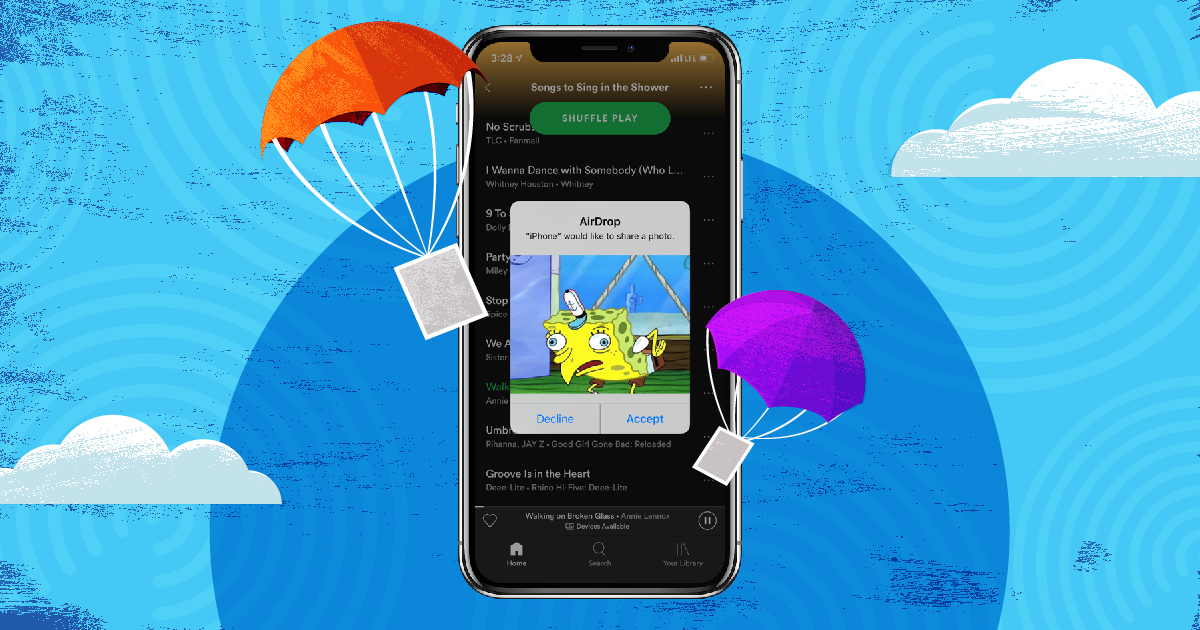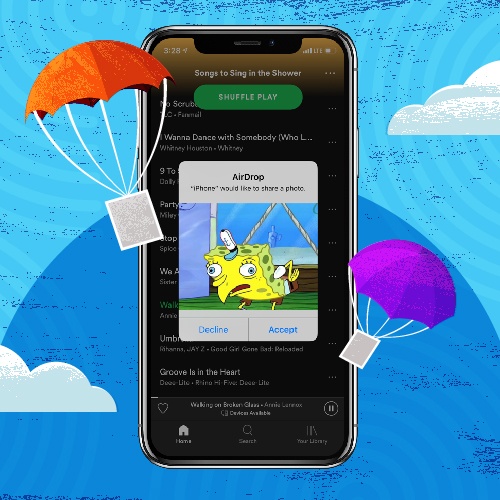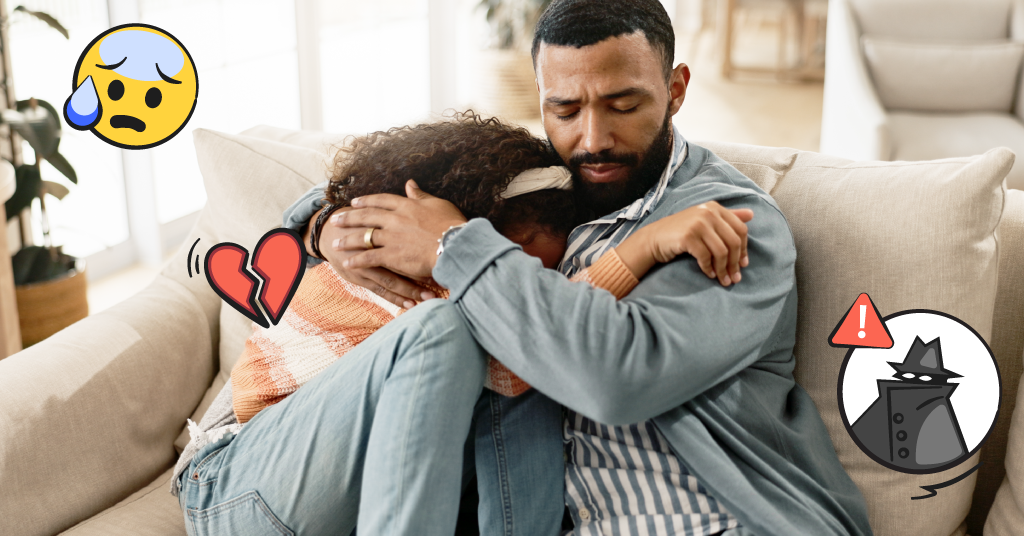
**Please note: This blog post was updated on December 19, 2023.**
There’s a new trend taking over public spaces — crowded trains, schools, busy shopping centers, and airports. You’ll be reading an article on your iPhone or texting a friend, and then all of a sudden, you get a notification that someone wants to AirDrop you an image. A preview of the image appears, as well as the option to accept or decline it. If you accept, it automatically saves to your camera roll. So how can you prevent your kids from receiving inappropriate images? And how can you turn off AirDrop on their phones?
The idea that anybody could send you a picture of virtually anything without your permission is sobering, to say the least. If this sounds scary, it’s because it is — the same features that kids use to prank their friends can be exploited by strangers who want to send them inappropriate files of their own. Here, we explain this new phenomenon, how to turn off AirDrop, and what parents need to know to help keep their kids safe.
Is AirDrop Safe and How It Works
To send and receive AirDrops, you just need to have an iOS device like an iPhone, iPad, or Mac computer, and it needs to have both Wi-Fi and Bluetooth turned on. The device also has to be set to “discoverable” by other users. Then, you simply select a photo and choose to share it via AirDrop.
Anyone else in the immediate area — a roughly 15-foot radius — who has Airdrop enabled is now fair game to receive your file. You’ll see the names of their devices on your screen, and all you have to do is select who you want to send the file to.
Why Kids Can’t Stop AirDropping
When kids get together, AirDropping can take off like wildfire. AirDropping is instant, anonymous (if your device doesn’t have your name in its title), and 100% irreversible. It becomes a sort of game, with kids changing the names of their phones to something random or funny so no one can tell who’s sending what. The element of surprise and the thrill of sending something silly or ridiculous can be addictive.
Kids also use AirDrop as a workaround for sending images or files that may violate the terms of service of social media platforms like Instagram or Snapchat. Images that may get automatically flagged as inappropriate can glide through unfettered with AirDrop.
The Dangers of AirDropping
You may be asking yourself as a parent, "Is AirDrop safe?" Though many AirDrops are harmless jokes or memes, there’s always the chance that someone could send you something obscene, disturbing, or inappropriate. There’s even a term for this activity: “cyberflashing.”
In addition to the emotional effects of receiving unwanted explicit images, AirDropping also poses privacy risks. Though it can technically be an anonymous activity, people can identify their targets by AirDropping a disturbing image and looking around for people’s reactions. Now they know who your child is and — if their name matches the name of their phone — what their name is, too.
There are also potential legal ramifications if your child accepts a pornographic image, as it will automatically save to their camera roll and become one of their saved photos. This is problematic because they could conceivably save something automatically without even knowing what it is.
Staying Safe: How To Turn Off AirDrop
You could be wondering how to turn off AirDrop in order to protect your kid from "cyberflashing." It’s important to talk to your kids about AirDropping and the dangers it poses. Fortunately, you can adjust the settings of your child’s phone so that they can either receive absolutely no AirDrops or AirDrops only from their contacts.
If your family decides not to disable AirDrop, or if your child turns it back on when they’re away from home, Bark can provide a digital safety net. We help protect kids who send and receive AirDrops by monitoring images saved to the camera roll, whether it’s an image they’re sharing with people or one they’ve recently received from a stranger.
Knowing how to turn off AirDrop may not be enough protection on its own. Our award-winning service monitors for issues like cyberbullying, adult content, suicidal ideation, sexual predators, and more — and not just for photos. Bark monitors texts, chat, email, YouTube, and 24+ social media platforms to help keep kids safe online and in real life. Sign up today for a free, one-week trial.
Read more
Bark helps families manage and protect their children’s digital lives.






